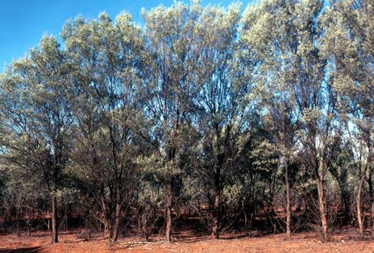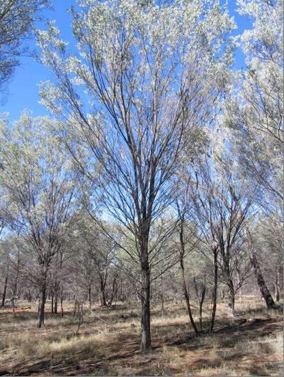Mulga


Habitat type: Mulga
Other key words: Mulga woodlands, Acacia aneura, open woodlands
Description: Mulga is both the name of a plant (Acacia aneura, a type of wattle), and the name of a vegetation type. In Queensland, mulga is characteristic of a wide range of arid and semi-arid vegetation communities, from low and open shrublands on stony soils, to open-forests ten or more metres tall that occupy deep soils on extensive red earth plains. Mulga vegetation generally dominated by mulga (Acacia aneura), but it often co-occurs with eucalypts, other acacias and various other arid shrubs and trees. Mulga has its stronghold in the Mulga Lands in Queensland’s south-west but it also extends north through the western Mitchell Grass Downs and west into the Channel Country. Trees, when present, can be up to 14 m in height, and the canopy cover can vary from 20 – 80 %. Eucalypts like poplar box (Eucalyptus populnea), silver-leaved ironbark (E. melanophloia) and gum-barked coolibah or forest-gum (E. intertexta) are important canopy species in more productive areas. Other eucalypts that occur in mulga country include Yapunyah (E. ochrophloia) and Napunyah (E. thozetiana) and River Red Gum (E. camaldulensis).
Some animals that use this habitat type: Major Mitchell's cockatoo, Hall’s babbler, splendid wren, red-capped robin, spiny-cheeked honeyeater, rufous whistler, crested bellbird, grey shrike-thrush, chestnut-rumped thornbill, yellow-naped snake, yakka skink and kultarr.


